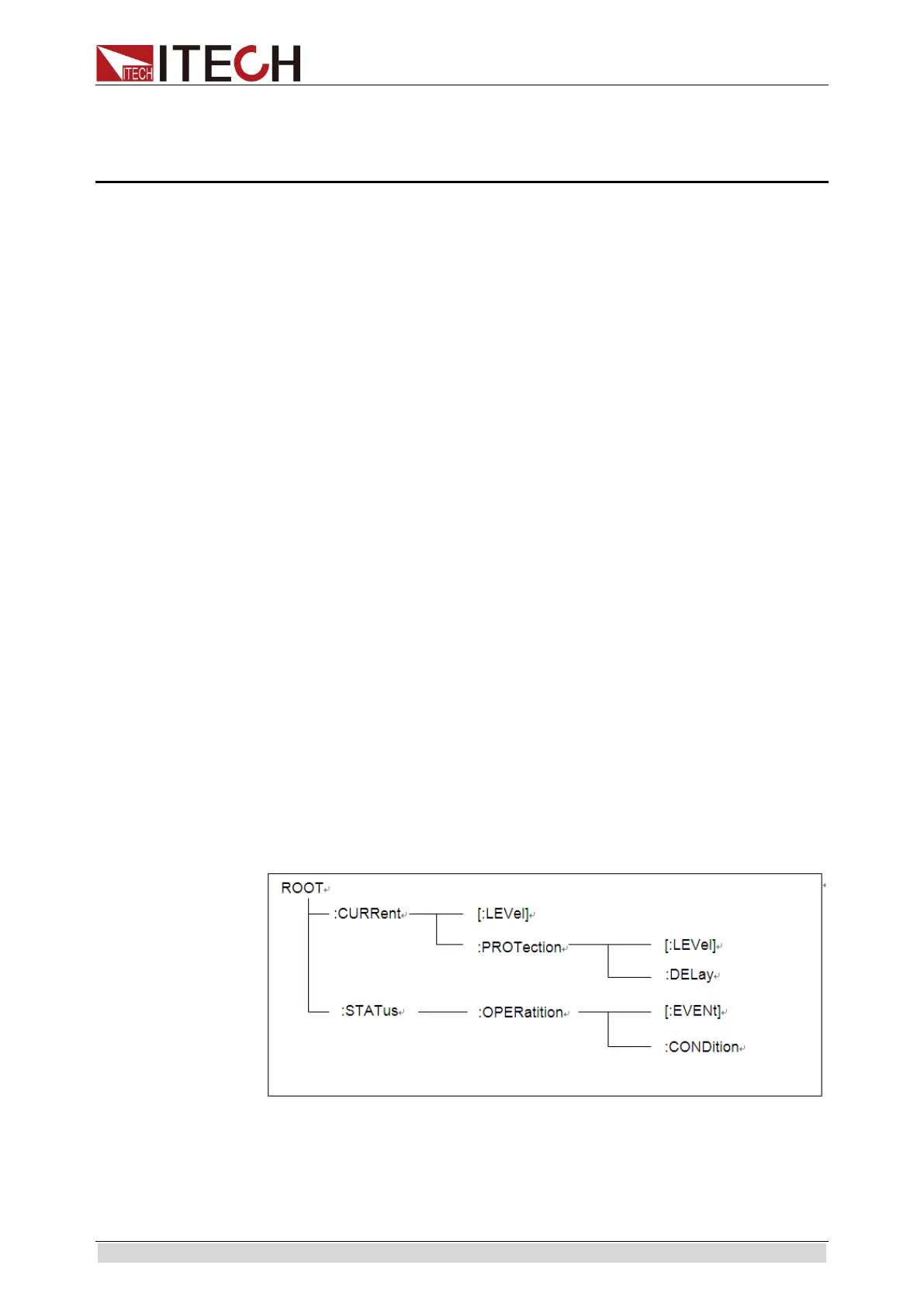SCPI Command Introduction
Copyright© Itech Electronics Co., Ltd. 1
Chapter1 SCPI Command Introduction
1.1 Overview
SCPI is short for Standard Commands for Programmable Instruments which
defines a communication method of bus controller and instrument. It is based
on ASCII and supply for testing and measuring instruments. SCPI command is
based on hierarchical architecture which also known as tree system. In this
system, Relevant Command is returned to a common node or root, so that a
subsystem is formed.
A part of OUTPut subsystem is listed below:
OUTPut:
SYNC {OFF|0|ON|1}
SYNC:
MODE {NORMal|CARRier}
POLarity {NORMal|INVerted}
OUTPut is the root class keyword, SYNC is the second keyword, MODE and
POLarity are the third keyword. Colon(:) is used for separating the command
keyword and the next level keyword.
1.2 Command Type of SCPI
SCPI has two types of commands, common and subsystem.
Common commands generally are not related to specific operation but to
controlling overall
.
instrument functions, such as reset, status, and
synchronization. All common
commands consist of a three-letter mnemonic
preceded by an asterisk: *RST *IDN? *SRE 8.
Subsystem commands perform specific instrument functions. They are
organized into an inverted tree structure with the "root" at the top. The
following figure shows a portion of a subsystem command tree, from which
you access the commands located along the various paths.
Multiple commands in a message
Multiple SCPI commands can be combined and sent as a single
message with one message terminator. There are two important

